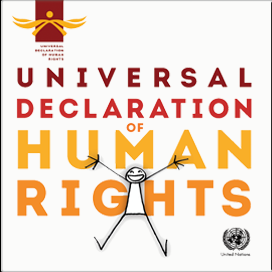 Kwanzaa
Kwanzaa
Kwanzaa is a week-long annual celebration held in the United States and other nations of the African diaspora in the Americas to honor African heritage in African-American culture. It is observed from December 26 to January 1, culminating in gift-giving and a feast. Kwanzaa was created by American Black Power activist Maulana Karenga (Ronald McKinley Everett) and was first celebrated in 1966–67. Its name derives from the Swahili phrase
matunda ya kwanza, meaning "first fruits of the harvest". The choice of Swahili, an East African language, reflects its status as a symbol of Pan-Africanism, especially in the 1960s, although most of the Atlantic slave trade that brought African people to America originated in West Africa.
Kwanzaa has seven core principles (
Nguzo Saba), which were developed in 1965, a year before Kwanzaa itself. Each of the seven days of Kwanzaa is dedicated to one of these principles:
*
Umoja (Unity): To strive for and to maintain unity in the family, community, nation, and race.
*
Kujichagulia (Self-Determination): To define and name ourselves, as well as to create and speak for ourselves.
*
Ujima (Collective Work and Responsibility): To build and maintain our community together and make our brothers' and sisters' problems our problems and to solve them together.
*
Ujamaa (Cooperative Economics): To build and maintain our own stores, shops, and other businesses and to profit from them together.
*
Nia (Purpose): To make our collective vocation the building and developing of our community in order to restore our people to their traditional greatness.
*
Kuumba (Creativity): To do always as much as we can, in the way we can, in order to leave our community more beautiful and beneficial than we inherited it.
*
Imani (Faith): To believe with all our hearts in our people, our parents, our teachers, our leaders, and the righteousness and victory of our struggle.
Families celebrating Kwanzaa decorate their households with objects of art, colorful African cloth, and fresh fruits that represent African idealism. It is customary to include children in Kwanzaa ceremonies and to give respect and gratitude to ancestors. Libations are shared, generally with a common chalice, Kikombe cha Umoja, passed around to all celebrants. Celebratory symbols include a mat (Mkeka) on which other symbols are placed: a Kinara (candle holder), Mishumaa Saba (seven candles), mazao (crops), Mahindi (corn), a Kikombe cha Umoja (unity cup) for commemorating and giving shukrani (thanks) to African Ancestors, and Zawadi (gifts). Supplemental representations include a Nguzo Saba poster, a black, red, and green flag, and African books and artworks – all to represent values and concepts reflective of African culture and contribution to community building and reinforcement. Ears of corn represent the children celebrating and corn may be part of the holiday meal.











